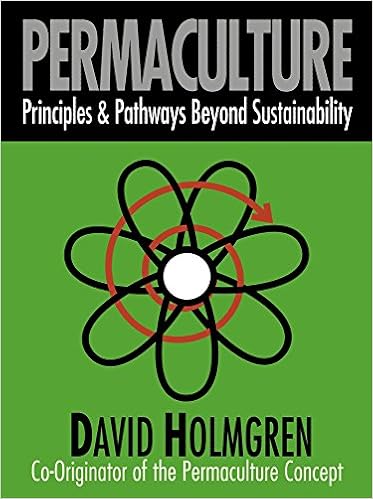Recommended Reading
Over the years many great publications on Permaculture have come to light. Here are a few we recommend everybody read and one in particular that will become your go to reference throughout the course.
Permaculture: A Desginers’ Manual
by Bill Mollison
The PermaEthos PDC very closely follows this manual by Bill Mollison. If you are to get any books on Permaculture this is the one you want at all times. It is exactly as the name implies, a manual.
Josiah, Jack and Nick keep this book close by their side.
Restoration Agriculture: Real-World Permaculture for Farmers
by Mark Shepard
Restoration Agriculture explains how we can have all of the benefits of natural, perennial ecosystems and create agricultural systems that imitate nature in form and function while still providing for our food, building, fuel and many other needs — in your own backyard, farm or ranch.
Gaia’s Garden: A Guide to Home-Scale Permaculture
by Toby Hemenway
The first edition of Gaia’s Garden sparked the imagination of America’s home gardeners, introducing permaculture’s central message: Working with Nature, not against her, results in more beautiful, abundant, and forgiving gardens. This extensively revised and expanded second edition broadens the reach and depth of the permaculture approach for urban and suburban growers.
Edible Forest Gardens
by Eric Toensmeier and Dave Jacke
Edible Forest Gardens is a groundbreaking two-volume work that spells out and explores the key concepts of forest ecology and applies them to the needs of natural gardeners in temperate climates. Volume I lays out the vision of the forest garden and explains the basic ecological principles that make it work. In Volume II, Dave Jacke and Eric Toensmeier move on to practical considerations: concrete ways to design, establish, and maintain your own forest garden. Along the way they present case studies and examples, as well as tables, illustrations, and a uniquely valuable “plant matrix” that lists hundreds of the best edible and useful species.
Taken together, the two volumes of Edible Forest Gardens offer an advanced course in ecological gardening-one that will forever change the way you look at plants and your environment.
Sepp Holzer’s Permaculture: A Practical Guide to Small-Scale, Integrative Farming and Gardening
by Sepp Holzer
Sepp Holzer farms steep mountainsides in Austria 1,500 meters above sea level. His farm is an intricate network of terraces, raised beds, ponds, waterways and tracks, well covered with productive fruit trees and other vegetation, with the farmhouse neatly nestling amongst them. This is in dramatic contrast to his neighbors’ spruce monocultures.In this book, Holzer shares the skill and knowledge acquired over his lifetime. He covers every aspect of his farming methods, not just how to create a holistic system on the farm itself, but how to make a living from it. Holzer writes about everything from the overall concepts, down to the practical details.
Permaculture: Principles and Pathways beyond Sustainability
by David Holmgren
David Holmgren brings into sharper focus the powerful and still evolving Permaculture concept he pioneered with Bill Mollison in the 1970s. It draws together and integrates 25 years of thinking and teaching to reveal a whole new way of understanding and action behind a simple set of design principles. The 12 design principles are each represented by a positive action statement, an icon and a traditional proverb or two that captures the essence of each principle.







7 Questions and Comments